 March 18, 2021 John E. Ross, KD8IDJ, Editor
| ||||||
QSO Today Virtual Ham Expo Experiences Technical Issues, On-Demand Access Opens The QSO Today Virtual Ham Expo attracted thousands of participants over the March 13 - 14 weekend. Taking a different tack than it did for "Unfortunately, we had many technical issues with the Airmeet presentations and the integration of the vFairs and Airmeet platforms," expo chairman Eric Guth, 4Z1UG/WA6IGR, explained afterward in a message to participants. All recorded presentations are available for attendees during the expo's 30-day on-demand access period, which ends April 16.
All told, 16 staff members worked in rotating shifts at ARRL Headquarters, greeting visitors through livestreaming video and audio. Several members of the ARRL Board of Directors were on the platform too. CEO David Minster, NA2AA, delivered the event's keynote address. Minster, who arrived in the midst of the COVID-19 pandemic last year, said ARRL would become a bigger player in the digital age. "A major part of the digital transformation at ARRL has to do with Amateur radio manufacturers and vendors including FlexRadio, Elecraft, Connect Systems, and Quicksilver Radio Products welcomed visitors and answered their questions on a one-to-one basis. Guth apologized for the poor experience many participants had in accessing and navigating the event.
"One of the things that we've stressed in all of our communications is that the QSO Today Virtual Ham Expo team is committed to constantly learning and improving what we do," Guth said in a statement. "Virtual conventions of this magnitude are new territory. We believe that there's a place for a virtual ham expo to serve the needs of the very large amateur radio community, especially those that don't attend in-person national or regional events (or even local events). We are committed to making that happen." The expo announced on Wednesday, March 17, that 80 presentations had already been added to the platform for on-demand viewing. Dayton Hamvention® Announces 2021 Award Winners Dayton Hamvention® has announced its 2021 award winners. Hamvention Awards Committee Co-Chairs Michael Kalter, W8CI, and Frank Beafore, WS8B, said that despite the COVID-19 pandemic, the Hamvention committee elected to go forward in announcing its selection of outstanding radio amateurs and predicted that Hamvention will return in 2022. Amateur of the Year
Although he was born in Puerto Rico, Vazquez grew up in Brooklyn, New York, and returned to Puerto Rico after college in 1977, taking a job at the Arecibo Observatory. Vazquez earned his amateur radio license in 1993, and headed the 2010 moonbounce effort from the observatory, as well as multiple special events using the KP4AO club call sign. Vazquez helped to provide communication support in the wake of Hurricane Maria. He was named Amateur of the Year in Puerto Rico in 2018 and received the Yasme Excellence Award in 2019. He's also a Volunteer Examiner and inaugurated the first virtual/online bilingual testing program as part of the Greater Los Angeles Amateur Radio Group (GLAARG) VEC. Technical Achievement
A credentialed space weather forecaster, Skov's forecasting work is widely known on social media and has been featured in publications and on TV. Her weekly space weather video podcasts are frequently featured on www.qrz.com. Skov said she specifically got her ham license in 2018 to better understand and serve the needs of the amateur radio community. Professionally, Skov is a research scientist for The Aerospace Corporation. She also teaches the art of space weather forecasting to meteorologists at Millersville University and is working with ARRL and HamSCI to create educational materials. Special Achievement
"Many mentors helped me and I try to pay it forward as best I can, especially for young people," he said. He's also participated in several DXpeditions, and five SouthWest Ohio DX Association "DXpedition of the Year" plaques adorn his ham shack. Club of the Year The Hamvention Awards Committee named the ARRL-affiliated Vienna Wireless Society (VWS), K4HTA, in Virginia as the Club of the Year. The committee noted that the club's 280 members focus on youth The club offers licensing classes, workshops, and four educational programs a month at its meetings, and these are archived for broader use. Their annual Winterfest is host to the ARRL Virginia Section Convention. The Vienna Wireless Society operates two repeaters in the DC area, and actively supports public service communications. Read an expanded version. ARRL Podcasts Schedule
The latest edition of Eclectic Tech (Episode 29) is a The On the Air and Eclectic Tech podcasts are sponsored by Icom. Both podcasts are available on iTunes (iOS) and Stitcher (Android), as well as on Blubrry -- On the Air | Eclectic Tech. Incumbent Section Managers Begin New Terms in April Eight incumbent ARRL Section Managers who were unopposed for re-election in the winter election cycle will begin new terms on April 1.
Because no nominating petitions were received from the ARRL Orange Section by the December 4, 2020 deadline, candidates for the office of Orange Section Manager will be re-solicited. Notices will appear in the April and May issues of QST to elicit candidates for an 18-month term starting October 1, 2021. Incumbent Orange Section Manager Carl Gardenias, WU6D, has decided not to run for another term after serving since 2003. ARISS Ham Station in Columbus Module Is Once Again Operational Some 6 weeks after going silent following a spacewalk that installed new antenna cabling, the Amateur Radio on the International Space Station (ARISS) ham station in the Columbus module is once again operational. The Columbus station, which typically uses the call sign NA1SS, is the primary ARISS amateur radio station used for school While the specific cause of the problem has not yet been determined, a March 13 spacewalk that restored the antenna cabling to its original configuration provided the cure. The plan to return the ARISS cabling to its original configuration had been a "contingency task" for a March 5 spacewalk, but the astronauts ran out of time. The ARISS work was appended to the to-do list for astronauts Mike Hopkins, KF5LJG, and Victor Glover, KI5BKC, to complete a week later. During the weekend spacewalk, Hopkins swapped out a cable for the Bartolomeo commercial payload-handling platform that had been installed in series with the ARISS VHF-UHF antenna feed line, returning the ARISS system to its pre-January 27 configuration. On March 14, ARISS was able to confirm the operation's success when Automatic Packet Reporting System (APRS) signals on 145.825 MHz were heard in California, Utah, and Idaho as the ISS passed overhead. ARISS team member Christy Hunter, KB6LTY, was able to digipeat through NA1SS during the pass. With additional confirmation from stations in South America and the Middle East, ARISS declared the radio system operational again. Work during the March 13 spacewalk also made Bartolomeo operational. "Yesterday was a great day for all!" Bauer said. "Ad astra!" Read an expanded version. ARRL Learning Network Webinars Visit the ARRL Learning Network (a members-only benefit) to register, check on upcoming webinars, and to view previously recorded sessions. The Art and Science of Operating Ultra-Portable -- Mike Molina, KN6EZE Tuesday, April 6, 2021 @ 8 PM EDT (0000 UTC on Wednesday, April 7)
Finding and Fixing RFI -- Paul Cianciolo, W1VLF Tuesday, April 20, 2021 @ 1 PM EDT (1700 UTC) RFI (radio frequency interference) -- from natural and manmade sources -- has been a problem for hams and shortwave listeners since the radio hobby began. Things have changed in the last 20 years with the advent of widespread solar power, LED lighting, grow lights, and computers. The technology boom has enhanced our daily lives, but at what price? Learn all about finding and fixing RFI in today's world. HF Noise Mitigation -- ARRL Northwestern Division Director Mike Ritz, W7VO Thursday April 22, 2021 @ 3:30 PM EDT (1930 UTC) An educational seminar to help new and experienced amateurs who are on HF and finding themselves plagued with noise. We'll learn what "noise" is, talk about the various noise sources, and discuss how to mitigate those noises using a variety of techniques. The ARRL Learning Network schedule is subject to change. Amateur Radio in the News
ARRL Public Information Officers, Coordinators, and many other member-volunteers help keep amateur radio and ARRL in the news. Share any amateur radio media hits you spot with us. YOTA Region 1 Taking Cautious Approach to COVID-19 and YOTA Camps The IARU Region 1 (IARU-R1) Youth Working Group has said no youth events will take place before mid-June, and that it will review those scheduled for later in the year as the pandemic situation evolves. The group said these events make social distancing difficult, and it doesn't believe it would be possible for them to take place safely. Other 2021 events will remain on the calendar for the time being. "The position on the [COVID-19] pandemic remains serious and unpredictable," the group said. "Governments everywhere struggle IARU Region 1 has planned several in-person events for 2021 in the Youth, amateur radio direction finding (ARDF), and high-speed telegraphy competition (HST) areas. A workshop for member-societies is also on the calendar. Whether these will take place as scheduled remains up in the air. IARU-R1 has said it will review the forecast evolution of the pandemic sufficiently before each event to decide whether it will take place. "Generally, this will be 4 months prior to the scheduled date," IARU-R1 said. "[That way,] those planning to attend should have sufficient time to make the necessary travel arrangements." IARU Region 1 said it wants to make sure that any events taking place do so in an environment that respects national requirements for pandemic control and does not place the health and well-being of participants at risk. Plans Continue for In-Person Friedrichshafen HAM RADIO Event The 45th HAM RADIO event in Friedrichshafen, Germany, is still planned for June 25 - 27, but the Deutscher Amateur Radio Club (DARC) concedes that the COVID-19 pandemic is making planning "exceedingly difficult." The DARC is the event's sponsor, while the venue, the Friedrichshafen Fairgrounds (Messe Friedrichshafen) and Local authorities will follow the course set by the federal government, but, DARC said, there is slow progress with Germany's vaccination program and some uncertainty regarding virus mutations, and it's not clear if and when approval will be given. Visitors from outside Germany may be subject to quarantine or testing, DARC said. "The safety, health, and comfort of our international visitors is our utmost priority, and hence, we want to advise you to plan your trip to Friedrichshafen bearing in mind that the in-person event still might get canceled." DARC said it's planning a "state-of-the-art online conference event" in parallel with the arrangements under way for the in-person event. It's contacting international amateur radio organizations to provide presentations in video or other formats. Ham Radio Satellite Returns from the Dead After 7 years of silence, the Delfi-n3Xt satellite is again transmitting a signal. The 3U Delfi-n3Xt nanosat, launched by Delft University of Technology (TU Delft), has not been heard since 2014, and its sponsors were surprised to learn that it was transmitting again. Delfi-n3Xt carries a linear amateur radio transponder. It was the second satellite launched by TU Delft, as part of the Delfi Program, which develops very small satellites. The first Delfi satellite, Delfi-C3, is still When functioning properly, the Delfi-n3Xt satellite transmits telemetry on 145.870 MHz and 145.93 MHz, and high-speed data on 2405 MHz. The inverting SSB/CW transponder has an uplink passband of 435.530 - 435.570 MHz LSB and a downlink passband of 145.880 - 145.920 MHz USB. The ham transponder was a last-minute addition to the project. On February 9, an automatic email notification was received from the satellite's ground station, indicating that a signal from the Delfi-n3Xt had been picked up. Student and ground station operator Nils von Storch said he'd programmed the ground station software so that it would continue to track Delfi-n3Xt and notify him if it ever came back to life. Relevant checks and analysis of telemetry frames prove the satellite is transmitting again. The reason it stopped transmitting has not yet been determined, and the big question now is how it was able to resume operation. Hypotheses include a bit flip in the software or a short circuit, given the extreme conditions in space. "Of course, in the past, we have looked for all kinds of explanations, and we also had theories about how the contact could ever come back," nanosatellite program manager Jasper Bouwmeester, PC4JB, said. "But after so long, I hadn't counted on it anymore." Bouwmeester, who has been managing the mission since 2007, expressed confidence that the satellite can still be of use to science. "But I am sure that we will be able to find solutions," operations manager Stefano Speretta said. "If we don't lose the signal again, there are interesting times ahead." -- Thanks to AMSAT News Service and Delft University of Technology Announcements
The K7RA Solar Update Tad Cook, K7RA, Seattle, reports: The average daily sunspot number rose just a little this week, from 18.4 to 19, and average daily solar flux edged down from 78.9 to 78.1. Solar activity remains low. The vernal equinox occurs at 0937 UTC on March 20. The southern and northern hemispheres will be bathed in approximately equal amounts of solar radiation, which has a positive effect of HF propagation.
The latest forecast predicts solar flux at 78 on March 18 - 19; 76 on March 20 - 25; 78 on March 26; 76 on March 27; 75 on March 28 - April 1; 78 on April 2 - 3; 70, 74, 76, and 72 on April 4 - 7; 71, 72, and 70 on April 8 - 10; 71, 72, and 71 on April 11 - 13; 73, 76, and 75 on April 14 - 16. Solar flux is expected to hit a high of 81 on April 19. Predicted planetary A index is 5, 12, and 24 on March 18 - 20; 20, 15, 12, and 8 on March 21 - 24, 5 on March 2 - 27; 25 on March 28; 20 on March 29 - 30; 10, 5, 15, and 8 on March 31 - April 3; 5 on April 4 - 7; 15, 18, 20, and 15 on April 8 - 11; 8, 5, and 8 on April 12 - 14, and 20 on April 15 - 16. The A index may peak at 25 again on April 24. Sunspot numbers for March 11 - 17 were 23, 15, 12, 24, 24, 23, and 12, with a mean of 19. The 10.7-centimeter flux was 78.2, 76.9, 81.1, 78, 74.8, 79.2, and 78.2, with a mean of 78.1. Estimated planetary A indices were 4, 12, 17, 25, 7, 4, and 3, with a mean of 10.3. Middle latitude A index was 3, 9, 13, 17, 5, 2, and 2, with a mean of 7.3. A comprehensive K7RA Solar Update is posted Fridays on the ARRL website. For more information concerning radio propagation, visit the ARRL Technical Information Service, read "What the Numbers Mean...," and check out K9LA's Propagation Page. A propagation bulletin archive is available. For customizable propagation charts, visit the VOACAP Online for Ham Radio website. Share your reports and observations. Getting It Right! It's ohms, not watts in the item "Monster Dipole Can Deliver Monster Signal," which appeared in the March 11 edition of The ARRL Letter. A font "translation" problem converted the omega symbol for ohms back to a capital W for watts. In the same article, some took issue with ZL3SV's unsubstantiated claim of 16 dB gain on 20 meters. After modeling the antenna, one reader said the peak gain would be in the vicinity of 11 dB, but only at a very low takeoff angle. Just Ahead in Radiosport
Upcoming ARRL Section, State, and Division Conventions Many conventions and hamfests have been canceled or postponed due to the coronavirus pandemic. Check the calendar of canceled events on the ARRL website. Find conventions and hamfests in your area. ARRL -- Your One-Stop Resource for . .
Subscribe to...
Free of charge to ARRL members...
| ||||||
 its inaugural event last August, the expo leveraged the capabilities of two virtual event platforms to increase interaction among attendees, speakers, and exhibitors. All did not go smoothly, however.
its inaugural event last August, the expo leveraged the capabilities of two virtual event platforms to increase interaction among attendees, speakers, and exhibitors. All did not go smoothly, however.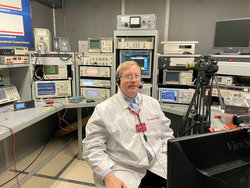 ARRL, a QSO Today Virtual Ham Expo partner, enjoyed virtual visits from attendees to its two exhibits. One included staff representatives for Member Services, Radiosport, ARRL Field Day, and Field Services. The other exhibit highlighted the expertise of ARRL Laboratory personnel, who offered technical and practical advice to those stopping by. On the team were Senior Test Engineer Bob Allison, WB1GCM, who streamed from inside the Lab's screen room where QST "Product Review" testing is conducted, and RFI Engineer Paul Cianciolo, W1VLF, who helped participants deal with pesky noise and interference issues. W1AW
ARRL, a QSO Today Virtual Ham Expo partner, enjoyed virtual visits from attendees to its two exhibits. One included staff representatives for Member Services, Radiosport, ARRL Field Day, and Field Services. The other exhibit highlighted the expertise of ARRL Laboratory personnel, who offered technical and practical advice to those stopping by. On the team were Senior Test Engineer Bob Allison, WB1GCM, who streamed from inside the Lab's screen room where QST "Product Review" testing is conducted, and RFI Engineer Paul Cianciolo, W1VLF, who helped participants deal with pesky noise and interference issues. W1AW 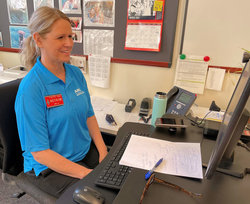 Station Manager Joe Carcia, NJ1Q, conducted virtual tours of the Hiram Percy Maxim Memorial Station all weekend.
Station Manager Joe Carcia, NJ1Q, conducted virtual tours of the Hiram Percy Maxim Memorial Station all weekend.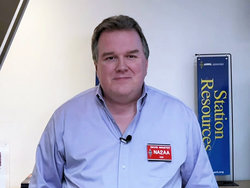 taking our excellence in content development and editing, and bringing it to video," Minster said. "You are seeing more activity from us on YouTube, the Learning Network (webinar series), and then later this year the launch of our Learning Center." Video, Minster pointed out, is always available and easy to pause and refer back to.
taking our excellence in content development and editing, and bringing it to video," Minster said. "You are seeing more activity from us on YouTube, the Learning Network (webinar series), and then later this year the launch of our Learning Center." Video, Minster pointed out, is always available and easy to pause and refer back to..jpg) "I attempted to integrate a number of systems together in order to make a better user experience," he explained. "It was a noble idea, because I wanted the convention like last August, with the lounge tables of Airmeet to make it more interactive. We failed on this platform for many of you. I am very sorry."
"I attempted to integrate a number of systems together in order to make a better user experience," he explained. "It was a noble idea, because I wanted the convention like last August, with the lounge tables of Airmeet to make it more interactive. We failed on this platform for many of you. I am very sorry."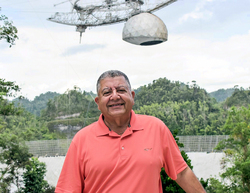 Angel M. Vazquez, Jr., WP3R, the head of telescope operations and Puerto Rico Coordination Zone Spectrum Manager for Puerto Rico's famous Arecibo Observatory, was cited as Amateur of the Year for "his unswerving and diligent support of amateur radio throughout the entire territory of Puerto Rico and worldwide."
Angel M. Vazquez, Jr., WP3R, the head of telescope operations and Puerto Rico Coordination Zone Spectrum Manager for Puerto Rico's famous Arecibo Observatory, was cited as Amateur of the Year for "his unswerving and diligent support of amateur radio throughout the entire territory of Puerto Rico and worldwide." Tamitha Skov, WX6SWW, is well-known as the
Tamitha Skov, WX6SWW, is well-known as the 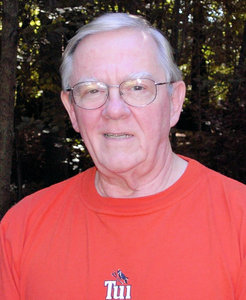 Wesley Lamboley, W3WL, was nominated by his peers for his lifelong, high-energy support for the science and art of amateur radio. "Not only has he supported youth coaching, membership recruiting, and technical problem assistance, he always does it with a smile and great humor," the Awards Committee said. Lamboley spent 40 years in the aerospace industry as a technical writer, electrical and systems engineer, and manager. Introduced to amateur radio in 1955 when a friend invited him to Field Day, Lamboley credits ham radio for much of his success.
Wesley Lamboley, W3WL, was nominated by his peers for his lifelong, high-energy support for the science and art of amateur radio. "Not only has he supported youth coaching, membership recruiting, and technical problem assistance, he always does it with a smile and great humor," the Awards Committee said. Lamboley spent 40 years in the aerospace industry as a technical writer, electrical and systems engineer, and manager. Introduced to amateur radio in 1955 when a friend invited him to Field Day, Lamboley credits ham radio for much of his success.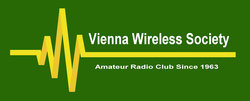 education and public service, and promote the growth of ham radio. The club is now the largest and most active in the Washington, DC, area.
education and public service, and promote the growth of ham radio. The club is now the largest and most active in the Washington, DC, area..jpg) The latest episode of the On the Air podcast (Episode 15) features a conversation with propagation expert Carl Luetzelschwab, K9LA, about what to expect in the new solar cycle.
The latest episode of the On the Air podcast (Episode 15) features a conversation with propagation expert Carl Luetzelschwab, K9LA, about what to expect in the new solar cycle.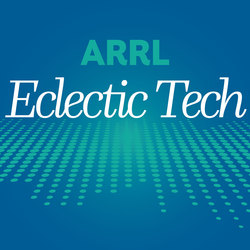 chat with Kristina Collins, KD8OXT, about how amateurs have participated in ionospheric research during recent solar eclipses.
chat with Kristina Collins, KD8OXT, about how amateurs have participated in ionospheric research during recent solar eclipses..jpg) They are Rick Paquette, W7RAP (Arizona); James Ferguson, N5LKE (Arkansas); Lelia Garner, WA0UIG (Iowa); Steve Morgan, W4NHO (Kentucky); Malcolm Keown, W5XX (Mississippi); Paul Stiles, KF7SOJ (Montana); Steven Lott Smith, KG5VK (North Texas), and Rick Breininger, N1TEK (Wyoming).
They are Rick Paquette, W7RAP (Arizona); James Ferguson, N5LKE (Arkansas); Lelia Garner, WA0UIG (Iowa); Steve Morgan, W4NHO (Kentucky); Malcolm Keown, W5XX (Mississippi); Paul Stiles, KF7SOJ (Montana); Steven Lott Smith, KG5VK (North Texas), and Rick Breininger, N1TEK (Wyoming)..jpg) contacts and other activities. The problem arose after a January 27 spacewalk replaced a coax feed line installed 11 years ago with another built by the European Space Agency (ESA) and Airbus.
contacts and other activities. The problem arose after a January 27 spacewalk replaced a coax feed line installed 11 years ago with another built by the European Space Agency (ESA) and Airbus.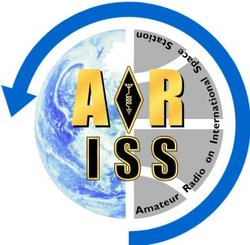 Hopkins raised a question concerning a sharp bend in the cable near a connector, but no further adjustments were possible.
Hopkins raised a question concerning a sharp bend in the cable near a connector, but no further adjustments were possible. Ultra-portable operation is quickly growing in popularity. Whether for SOTA, POTA, backcountry survival, or just spending time in nature, learning how to operate ultra-portable is a fun and rewarding experience. In this presentation, Mike, KN6EZE, covers the basics for new and experienced ham radio operators.
Ultra-portable operation is quickly growing in popularity. Whether for SOTA, POTA, backcountry survival, or just spending time in nature, learning how to operate ultra-portable is a fun and rewarding experience. In this presentation, Mike, KN6EZE, covers the basics for new and experienced ham radio operators.(1).jpg) with balancing the health of their economies with the health of their populations. The vaccine rollout seems likely to take most of this year and even then, the impact of mutant strains of the virus and national quarantine requirements are difficult to predict."
with balancing the health of their economies with the health of their populations. The vaccine rollout seems likely to take most of this year and even then, the impact of mutant strains of the virus and national quarantine requirements are difficult to predict."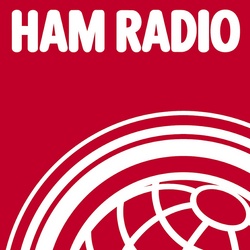 local authorities have the last word. Planning under way includes
local authorities have the last word. Planning under way includes 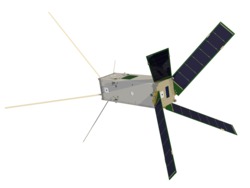 working as well. Now that Delfi-n3Xt is transmitting again, steps are being taken to further its mission. The Delfi-n3Xt project started in 2007, and the satellite was launched in November 2013. The satellite operated successfully for 3 months, achieving mission success. Contact with the satellite was lost in late 2014 after an experiment with the linear transponder.
working as well. Now that Delfi-n3Xt is transmitting again, steps are being taken to further its mission. The Delfi-n3Xt project started in 2007, and the satellite was launched in November 2013. The satellite operated successfully for 3 months, achieving mission success. Contact with the satellite was lost in late 2014 after an experiment with the linear transponder..png) Radio amateurs in Europe recently were able to grab and decode
Radio amateurs in Europe recently were able to grab and decode  Starting on March 22, the Massachusetts-Rhode Island Slow Net (MARISN) will meet Mondays, Tuesdays, Fridays, and Saturdays at 8:30 PM EDT on 3598 kHz.
Starting on March 22, the Massachusetts-Rhode Island Slow Net (MARISN) will meet Mondays, Tuesdays, Fridays, and Saturdays at 8:30 PM EDT on 3598 kHz.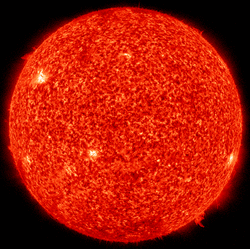 Average daily planetary A index rose from 7.6 to 10.3, and average daily middle-latitude A index increased from 6.1 to 7.3. Solar wind on March 14 drove the planetary A index to 25, and Alaska's College A index was 37.
Average daily planetary A index rose from 7.6 to 10.3, and average daily middle-latitude A index increased from 6.1 to 7.3. Solar wind on March 14 drove the planetary A index to 25, and Alaska's College A index was 37..jpg)








